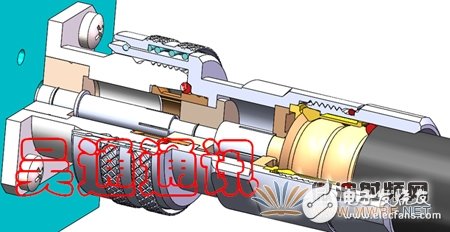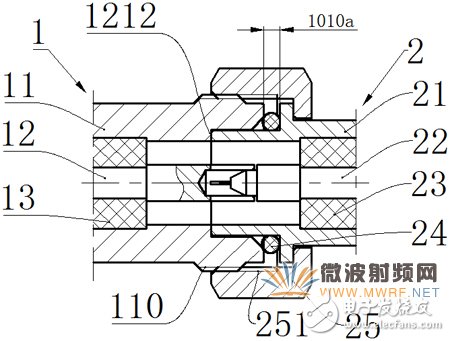This paper introduces several innovative solutions for upgrading the compatibility of RF coaxial connectors, namely Schemes I, II, III, and IV. A shared characteristic among these schemes is that the electrical reference surface is electrically connected to the signal path, incorporating an elastic contact mechanism to ensure conductivity. The product exhibits a very low and stable dynamic intermodulation characteristic, which remains unaffected by connection torque or axial clearance. It also supports both quick-connect and threaded connection functions, ensuring compatibility with older versions. Additionally, it allows the plug and RF cable to follow the connection between the socket and plug, effectively preventing the screw sleeve from loosening and avoiding potential damage or accidents caused by excessive torque on the RF cable. RF connectors play a crucial role in microwave transmission systems as they serve as essential connection and disconnection components. They act as interfaces between various RF circuits within the system and must be globally compatible and interchangeable to remain relevant. Over the past century, the IEC international standard coaxial connectors have evolved significantly, resulting in hundreds of standardized interface models derived from non-standard designs. With the rapid development of the wireless communication industry, especially in recent decades, RF coaxial connectors have undergone continuous upgrades. However, as equipment evolves, old systems are gradually replaced, creating challenges for compatibility and upgrade design in RF interconnect components. The typical structure of the IEC standard RF coaxial connector is illustrated in Figure 1: Figure 1. Typical standard interface structure The socket consists of an outer conductor, an inner conductor, and an insulating support, while the plug includes an outer conductor, an inner conductor, an insulating support, a sealing ring, and a screw sleeve. When the plug is inserted into the socket, the internal thread on the screw sleeve engages with the external thread on the outer conductor. The mechanical and electrical reference surfaces are aligned at the end of the plug and the bottom of the socket, with the sealing ring compressed to maintain a gap. Despite its widespread use, this traditional design faces several limitations when meeting modern communication equipment requirements: 1. It lacks the ability to enable quick insertion and release, leading to inefficiencies during installation, debugging, and testing. 2. Modern communication devices require precise pre-tightening force to maintain good intermodulation performance. However, insufficient or loose tightening can cause random intermodulation interference, while excessive force may damage the silver plating on contact surfaces, increasing contact resistance and potentially causing signal failure. 3. In prior designs, although the outer conductor is separated from the electrical reference plane, it often features a slotted structure, increasing manufacturing costs and reducing reliability. In vibrating environments, the contact area may shift, leading to unstable signal paths and degraded performance in terms of intermodulation and return loss. 4. Due to the length of RF cables during installation, rotation is inevitable. If the plug is tightened using a screw sleeve, it cannot follow the rotation, risking loosening of the screw or damage to the cable. This paper presents a high-compatibility fast-locking RF coaxial connector that combines the advantages of both threaded and quick-connect mechanisms. It is designed to be compatible with previous versions, offering stable and reliable performance in terms of dynamic intermodulation and return loss. The connector also prevents thread loosening and cable twisting, making it ideal for applications where mechanical stability is critical. Its simple and robust design reduces manufacturing costs while improving precision and reliability. The high-compatibility fast-locking RF coaxial connector can be implemented through four different configurations—Schemes I, II, III, and IV. Each scheme shares common structural elements, such as the outer conductors, inner conductor, and insulating support. Schemes I, II, and III feature additional components like the unlocking sleeve, compression spring, and circlip, enhancing their functionality. Scheme IV, on the other hand, simplifies the design by integrating a screw sleeve directly into the plug. All schemes ensure that the electrical reference surfaces are electrically connected via resilient contacts, providing consistent signal integrity. The outer conductors include an external thread with a V-shaped groove, enhancing mechanical engagement and stability. The mechanical reference faces on the front and bottom ends of the socket and plug ensure accurate alignment, further contributing to reliable performance under various conditions. Utility Scale Energy Storage,Solar Energy System,Solar Photovoltaic Panels,Photovoltaic Pv Systems EMoreShare International Trade (Suzhou) Co., Ltd , https://www.emoreshare.com
